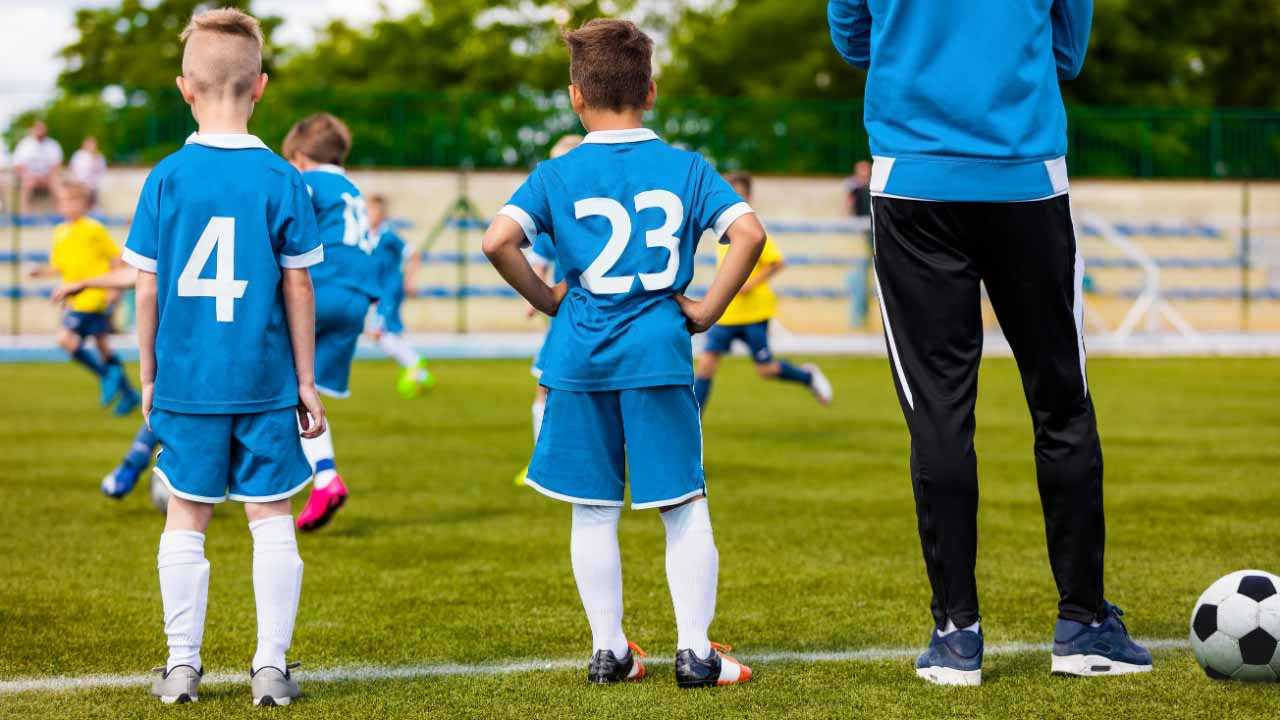How Metaphors and Cues Help You Coach
Expert-driven advice for capturing the imagination of your youngest players
Sarah Lindenfeld Hall
| 4 min read

Canva
Getting a gaggle of 5-year-old soccer players to learn how to shoot, dribble and pass can be easier said than done. First, you need to get their attention. Then, you need to figure out the best way to teach young minds how to translate your words into action.
For generations, coaches have helped athletes master new skills by giving them so-called internal cues that focus on how players should use their body to score or move the ball.
But findings from research at the University of Nevada, Las Vegas, and elsewhere, tell us that athletes learn better when coaches focus on the outcome of their movements, not how their foot should hit the ball or which muscles to use.
So, instead of telling a player to lock their ankle and snap at the knee when shooting, coaches should give them an external cue such as hit the back of the net. This doesn’t mean talk of muscle movements and shooting foot positioning is verboten. As players start gaining skills, coaches can balance a mix of internal and external cues, Fritz Ettl, an assistant professor of human movement and health science education at Butler University, tells MOJO.
Why does it work? Instead of athletes worrying about their every movement, their focus is on the outcome. “Attempts to control every muscle can get in the way of accomplishing the task,” Ettl says.
This kind of coaching doesn’t always come naturally, especially if you grew up with coaches who shouted internal cues from the sidelines. But, Ettl points out, capturing the imagination of your youngest players through these kinds of metaphors and cues is a research-proven way to coach them to success on the field. It’s worth a shot.
“Sometimes it might fall flat, but that doesn’t mean you don’t try it again,” he says. “Ideally, it’s part of your bag of tricks, and you can weave it in once a training session, twice a training session, once a week. Whatever makes sense to the flow or plan you have.”
Here are some metaphors and external cues that can resonate with the youngest soccer player.
Running
Instead of focusing on how fast a kid can move their legs and body, say something like push the ground away from you as hard as you can, Ettl says.
Dribbling
You might be inclined to talk to kids about where to place their foot or orient their body. Ettl recommends these simple external cues instead: Small space, small touch or Pretend the ball is a yo-yo.
Passing
While demonstrating a longer pass between players, you can show them how to point their toe, but tell them to put on the accelerator and make the ball go fast, Ettl says.
Shooting
Shooting is a tough skill to teach, Ettl says. Often, attention is paid to how the body should be positioned over the ball and where the shooting foot should land.
Instead, use phrases like, make the ball spin, hit the back of the net or shoot it like Ronaldo (after Cristiano Ronaldo). If you want the player to kick the ball low and hard, tell them to punch the ball right in the nose.
“A punch seems to resonate with how they hit it,” Ettl says.
While you can prompt players with your own metaphors and cues, Ettl also encourages coaches to let kids create their own, especially after they’ve mastered a drill or movement. Ask them to come up with phrases that will help them remember to do it again the same way. You could even have them huddle in small groups and then, as a full team, vote on their favorite player-created sayings.
“It’s a little bit of a long play,” Ettl says. “But if you want sustainability and you’re really interested in long-term buy in and really meaningful long-term learning, sometimes that slower route of discovery, invention and creativity from the learning is going to stick longer and better.”




